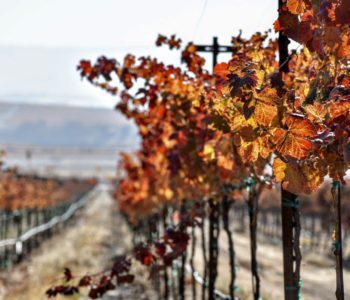 Wine Production
Wine Production
The Potential for Smoke Taint in 2020
By Mark Clarin of McGrail Vineyards
Because of the local fires in August, I decided to try to understand the potential for smoke taint in our vineyards. After researching the potential for smoke taint, we followed the recommendations from ETS Laboratories. ETS is the West Coast’s most respected wine lab and since they are based in St. Helena, they have seen a lot of examples over the past few years. Their recommendations are to make micro ferments so they can measure guaiacol and 4-methylguaiacol, among other smoke flavor compounds. Some of our colleagues in Napa Valley and Sonoma Valley are using this technique to decide whether to risk picking the fruit and spending good money after bad. I must say, we were a bit frightened at the thought of leaving our grapes hanging.

We went to the vineyard and harvested grapes from five different areas of our vineyards into five gallon buckets. I had this crazy idea that washing the clusters with water might reduce the smoke compounds on the grapes. In researching this my colleagues conveyed that it doesn’t work but I wanted to see for myself. We used two buckets per pick and washed the clusters into one of the buckets. The other bucket was left au natural.
Then, we yeasted them and fermented them, sampled the wine, and sent the samples to ETS laboratory in St. Helena. The results were interesting, as there was no correlation between the washed grapes versus the unwashed grapes. All of the samples had less than 3 micrograms per liter of guaiacol (smoke flavor) and some were in the 1.3 range. What does this mean? It means we have low risk of smoke flavor in the wines. As we are now in the middle of fermentations, I am feeling strong and hopeful.

December 2020 Vineyard Updates
How has our wine and our vineyard fared since October? Read our December 2020 vineyard updates here.









